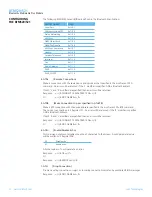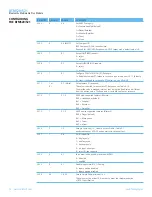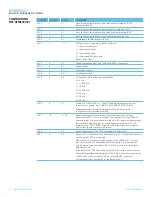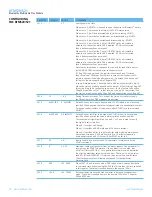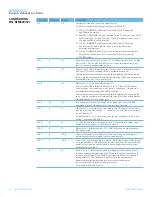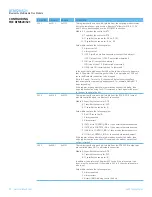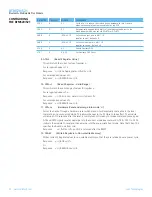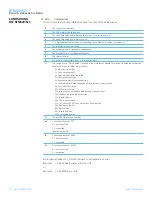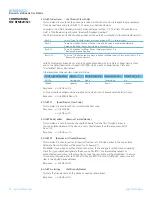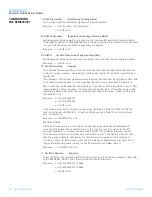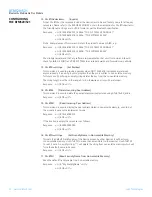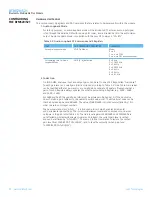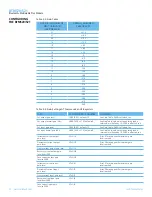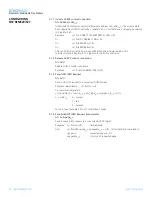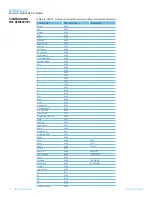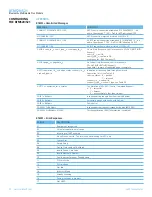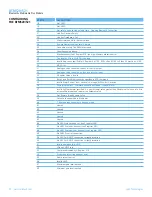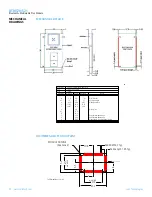
28
www.lairdtech.com
Laird Technologies
BTM520/521
Bluetooth
®
Multimedia Plus Module
CONFIGURING
THE BTM520/521
18 AT+BTP<bd_addr> {Enable Cautious Page/Inquiry Scanning}
Enable page scanning and wait for a connection from device with Bluetooth address <bd_addr>.
If the specified address is 000000000000 then incoming connections are accepted from any device,
is as per AT+BTP without an address. Inquiry scanning is also enabled.
Response: <cr,lf>OK<cr,lf>
19. AT+BTP {Enable Promiscuous Page/Inquiry Scanning}
Enable page scanning and wait for a connection from any device. Inquiry scanning is also enabled.
Response: <cr,lf>OK<cr,lf>
20. AT+BTQ {Enable Inquiry Scans ONLY}
When inquiry scan is enabled, it implies that this device will respond to inquiries from other devices.
Use AT+BTX to disable inquiries.
Response: <cr,lf>OK<cr,lf>
21. AT+BTR<bd_addr> {Set Outgoing Peer Address}
This command is used to store a peer address for outbound connections in non-volatile memory.
A value of 000000000000 has the special meaning of invalid peer address.
This command is used to set up a module in pure cable replacement mode.
If S register 512 = 1 and the peer address is NOT 000000000000, then it will periodically (time
specified via S register 505) attempt to connect to the peer address specified. In this circumstance
all commands from the host are buffered in the receive buffer, until a Bluetooth connection is
established with the peer device and it then sends the buffer across. This means that if the peer
device is not in the vicinity and will never be there, the device effectively becomes useless, as in
this circumstance a host would want to get attention of the AT parser to send it new commands
– probably one to delete the peer device.
In this circumstance, a recovery is possible by one of two methods. The first method assumes that
the DTR from the host is connected to the DSR line of the module and the second method assumes
that this connection is absent. In the first method it is enough to deassert the DTR line from the host
and that will abort the autoconnect cycle. The second method is initiated by resetting the device
and then ensuring that the text string “AT+BT&BISM&<cr>” is sent (where <cr> is the carriage
return character). There is special code which looks out for this magic command and terminates
the autoconnect cycle if it sees it and confirms to the host of that fact by sending an “OK” response.
Response: <cr,lf>OK<cr,lf>
22. AT+BTR {Delete Outgoing Peer Address}
This command is used to delete the peer address previously stored using AT+BTR<bd_addr>.
Response: <cr,lf>OK<cr,lf>
23. AT+BTR? {Read Outgoing Peer Address}
This command is used to display the peer address stored in non-volatile memory, used to put the
device in pure cable replacement mode.
Response: <cr,lf>12346789012
<cr,lf>OK<cr,lf>
If the location is empty the response is as follows.
Response: <cr,lf>00000000000
<cr,lf>OK<cr,lf>

